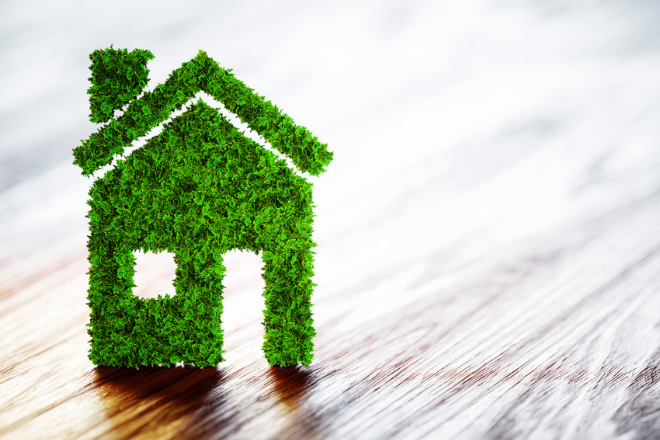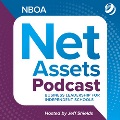Article by Larry Eighmy and James Hayes, Stone House Group
We know this much: successful sustainability in schools — at every level, from primary schools to higher education — entails comprehensive strategic planning and interventions in programming, facilities and overall campus culture. But it remains to be seen how the concept of sustainability will evolve as students return to the academic year in the current pandemic environment. As we slowly, with hope, move towards a post-pandemic world, what long-term changes will we see? A typically undervalued component of high-performance buildings — the health and wellness of building occupants — may now receive more attention and resources, as we grapple with questions of public health more than ever before.

Reprioritizing the Three Pillars of Sustainability
The three pillars of sustainability can be seen in the following graphic: HVAC operations, space planning and health building rating system. The COVID-19 pandemic has placed a new emphasis on health and wellness in our school buildings. Most immediately, healthy buildings begin with short-term HVAC Operations and space planning strategies that support their reopening plan this fall. These efforts can be extended with healthy building rating systems.
A longer-term outlook will lead us to consider what makes a building healthy beyond the pandemic. While the primary standards for ranking high-performing buildings used to be energy based — for example, ENERGY STAR or LEED ratings — we may soon be evaluating buildings with a broader focus on health and wellness. Rating systems like WELL and Fitwel, which reward measures that improve health and safety, may soon be as prevalent as LEED buildings.
Financial Implications
One of The Stone House Group’s foundational philosophies has been that “Energy is a barometer of facilities stewardship.” We often found that educational institutions with low energy costs were also well maintained with minimal deferred maintenance. Pre-COVID-19, a key focus for building operators was to reduce energy consumption.
The pandemic has resulted in a radical shift in our approach in what defines sustainable and well operated facilities; we are prioritizing the health and wellness of building occupants. The graphic below provides a financial rationale for focusing on health and wellness. The cost of people – salaries and benefits – generally represents 90% of a facility’s operating costs. Therefore, strategic investments in facilities can reduce health care costs and absenteeism, better test scores in schools, increase productivity in offices, and result in earlier discharges from hospitals. Studies over the past decade, following pioneering research by Haverinen and Shaughmessy, have found an association between substandard classroom ventilation rate and students’ academic achievement. They support the concept that improving indoor air quality by increasing HVAC ventilation rates results in improved academic achievement of students.
How much more will it cost to operate facilities focused on the health and wellness of occupants? Many facilities over the summer of 2020 were unoccupied, and astute building operators set back HVAC systems to ensure they did not operate at full capacity while empty. This type of facility likely consumed 30% less energy compared to a pre-COVID baseline. As facilities reopen this fall or perhaps later, in 2021, we recommend that operators implement higher filtration standards and increase air changes per hour to improve air quality, reducing the risk of airborne COVID-19 transmission.
A facility with improved air quality will likely consume 30% more energy when compared to a pre-COVID baseline. Campus operators should be prepared for a large swing in energy costs from the summer to fall months, and year-over-year energy cost comparisons will likely show significantly higher energy costs this school year as opposed to last, if your campus is open. Higher energy costs, however, should result in healthier faculty, staff and students, and is a tradeoff that business officers will gladly make in today’s environment.
In a post-pandemic world, we envision campus operators will have a continued focus on health and wellness while operating as energy efficiently as possible.
Health and Wellness Building Rating Systems

Throughout the U.S and abroad, green building certification programs continue to catalyze increasing sustainability and performance in building design and construction. These solutions take one of two forms: prescriptive- or performance-based certification programs. Whereas prescriptive-based programs target the materials and equipment that comprise a building design, performance-based programs specify particular performance thresholds for the building. Prescriptive paths are a rapid and definitive, and have a conservative means towards verification compliance. Performance-based programs typically require a year of monitoring and verification following construction completion to demonstrate compliance.
Sustainability also extends beyond high-performance buildings into the culture, policies and programming of the institution. With an abundance of opportunities to demonstrate dedication to the sustainability movement, the industry has developed several platforms for competitively ranking these institutions by how “green” they are. The following table summarizes these key points:
The outset of the healthy building movement is likely to begin similarly to the sustainability movement, with prescriptive programs, often project-based, such as LEED v4.1 and Fitwel, that provide a guided method to a high-performance building that emphasizes occupant health. Performance-based programs such as WELL provide an opportunity to meet aggressive goals in much the same way. Passive House prioritizes the contiguous building envelope and airflow of a building, and Net Zero Energy focuses on the energy consumed and produced through a performance period.
LEED v4.1 (Second Generation)
In response to COVID-19, the U.S. Green Building Council has declared a “second generation” of the organization and has announced that it will update its rating systems to prioritize health. The updated rating system is set to be released at the end of 2020. Several immediate plans include four new LEED pilot credits designed to help building teams provide healthy spaces and safe re-entry. This shift in focus from one of the most well-recognized green rating systems in the world encapsulates the essence of this movement, and will undoubtedly signal other organizations to follow a similar path, thus paving the way forward for a broader shift in high-performance buildings overall.
Fitwel
The Fitwel rating system, developed by the Center for Disease Control (CDC) and the General Services Administration (GSA), aims to help employers evaluate all design factors to create a healthy space for building occupants and visitors. Fitwel incentivizes certification with low registration and certification fees, and a lack of prerequisites. Common categories of project evaluation include proximity to public transit, outdoor spaces, indoor air quality, access to healthy foods, and workspace design. Fitwel is well-positioned, having launched in 2016. Fitwell recently introduced their Viral Response Module, which provides annual, third-party certification of policies and practices informed by the latest public health research on mitigating the spread of contagious diseases. Academic facilities can be Viral Response Certified or Certified with Distinction.
WELL
WELL is a rating system for measuring, certifying and monitoring features of the built environment that impact human health and wellbeing, through air, water nourishment, light, fitness, comfort and mind. Unlike Fitwel, the WELL rating system takes a performance-based approach to certification. Projects pursuing WELL certification are required to be evaluated and inspected by a WELL assessor. WELL was developed by Delos, a wellness real estate and technology firm, and launched in October 2014. It is managed by the International WELL Building Institute, a public benefit corporation. Similar to LEED, WELL is third-party certified by the Green Business Certification Incorporation. WELL just recently began offering their WELL Health-Safety Rating for Facility Operations and Management, which is an evidence-based, third-party verified rating for all new and existing buildings focusing on operational policies, maintenance protocols, stakeholder engagement and emergency plans.
Institutional Ranking Platforms
As more institutions pursue certifications signifying their commitment and dedication to their occupants’ well-being, consumers will seek to identify and rank these institutions by the number of certified facilities, policies for new construction, or the culture promoted within the facilities.
For example, SecondNature has led this need for higher education institutions by creating Climate Leadership Challenges and pushing a higher standard for carbon emissions reductions. The Sustainability Tracking and Rating System (STARS) used by Climate Commitment institutions ranks institutions on a five-tiered scale to identify the sustainability performance. Notably, STARS requires institutions to provide feedback on the following question: Are school buildings that were constructed or underwent major renovations in the past three years LEED certified? Industry growth suggests that this question will be broadened to include healthy building rating systems such as WELL and Fitwel. Earning a healthy building certification for your school facilities assures community members that the school has taken significant measures to prioritize human health and wellness during these uncertain times.
Join the Movement
The pandemic has presented us all with a prime opportunity to prioritize the wellness of occupants and promote a previously undervalued component of sustainability – people’s health. The coming months may be the time to modify building operations and spaces to demonstrate this commitment. The sustainability movement grew from within college campuses, and the health and wellness movement promises similarly be led by educational institutions.
This movement begins with immediate modifications to HVAC systems and space reconfiguration, is advanced by healthy building certifications such as WELL, Fitwel or LEED v4.1, and will be followed with a platform to measure performance and rate peer institutions. How will your facilities compare?



